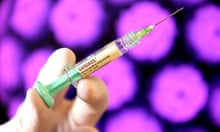Scientists have developed a more accurate test for cell changes that can lead to cervical cancer.
The revolutionary test can also pick up DNA markers for some other common cancers, meaning that it could in future be used as a predictive test for breast, womb, cervical and ovarian cancer.
The scientists behind the test had previously shown that by using cervical cells from a routine smear test, they may be able to spot ovarian and breast cancer or predict their likelihood of developing.
Now the expert team have revealed that when tested for cervical cancer, the new test performs better than current methods for identifying women with advanced cell changes who need treatment.
For those without cell changes but who had human papilloma virus (HPV), which causes most cases of cervical cancer, it detected 55% of those who would have cell changes in the next four years. The results were published in the journal Genome Medicine.
“This new method is more specific and doesn’t lead to over-treatment, which is good news for cervical cancer prevention and great news for everyone who needs to be screened,” said Athena Lamnisos, the chief executive of the Eve Appeal charity.
“It’s so welcome to see screening tools and predictive tests becoming more effective. We want to prevent cancer – and we know with cervical cancer that we can intervene at an early stage.”
There are about 3,200 new cases of cervical cancer each year in the UK and about 850 deaths. Half of women with the disease survive for 10 years or more.
In their latest study, experts led by the University of Innsbruck and UCL looked at DNA methylation, which acts as an extra layer of information on top of DNA.
DNA contains all the genes people inherit from both their parents, while DNA methylation tells cells which bits of DNA to read.
after newsletter promotion
Factors such as smoking, pollution, poor diet and being overweight can alter these markers and change how the cell behaves. By looking closely at DNA methylation, scientists think they can detect cancer and possibly predict the risk someone has of developing cancer in the future.
The new study included 1,254 cervical screening samples from women with cell changes ranging from lower to high risk, women with HPV but no cervical cell changes, and samples from women without any cervical cell changes who went on to develop high-risk cell changes within four years.
Prof Martin Widschwendter, from UCL’s department of women’s cancer, said: “Vaccination against the virus that causes cervical cancer is now widely implemented and is leading to changes in the amount and types of the virus circulating in the community. In turn, our approaches to cervical screening must adapt so that programmes continue to deliver benefit.
“Building new, holistic, risk-predictive screening programmes around existing, effective cervical sample collection offers real potential for cancer prevention in the future.”








